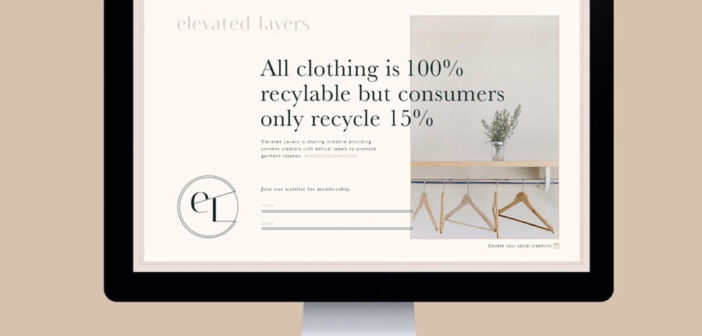Elevated Layers, set to emerge from beta mode late this month, plans to provide high-end fashion companies a means of unloading unsold clothing to emerging influencers eager to tag their labels. And ShopWorn, which compares itself to The RealReal, but for unworn, display-model accessories, is giving brands an alternative to buying back and discarding old styles.
“World-class brands struggle with unsold inventory, and [they]destroy merchandise just to prevent it from being discounted on the internet,” said Richard Birnbaum, Shopworn’s founder and CEO. “But our company was conceived with the idea of being a brand protector, rather than a brand killer.”
Currently, Shopworn sells handbags, jewelry and watches by 50 brands, including Gucci, Dior, Chopard and Cartier, and it expects to double that number in the next 18 months. (Earlier this year, it was reported that Cartier owner Richemont destroyed nearly $600 million worth of watches in two years.) Most styles are sourced from retailers, though the company buys display inventory direct from 15 brands. It expects to do $14 million in sales this year, up from $8.8 million in 2017.
As it grows, maintaining a high bar for brands carried would be smart, considering brands’ increased focus on alignment in the name of maintaining control. It’s a main reason fashion companies cite for not selling on Amazon and pulling back on wholesale partners.
Elevated Layers founder Roxy Ortiz said a key factor to getting brands to sign on with her company has been communicating what high-end brands are already on board — so far, they include Givenchy, Acne Studios, Opening Ceremony and Helmut Lang.
“They’re just sitting on this old, dead inventory,” said Ortiz, a former influencer and fashion stylist, of her pitch. “I tell them I can go in and edit — take 30 or 50 pieces from those existing resources — and plug it into this model. It doesn’t cost them anything.”
In fact, brands make money, earning a cut when influencers check out their styles. In addition, they get a piece of the influencer market, and in front of the millennial audience, without investing marketing dollars.
Elevated Layers centers on a membership model involving an application process — acceptance follows a screening period, when their Instagram timeline, engagement, affiliates and tags are reviewed to ensure “beautiful content” is their end goal. Creators including bloggers, photographers, stylists and even influencer agencies are considered. Membership is $2,000 a year, plus a $95 initiation fee, and members can swap out four pieces at a time, as often as they’d like. Items’ retail value can total up to $3,500 per rotation, Ortiz said.
She is counting on the fact that emerging fashion influencers — not yet in cahoots with big brands, but looking to keep outfit posts interesting — will turn to her company versus affordable fast-fashion brands when choosing their next looks. “The whole goal is to keep them from buying things that are going to be forgotten a couple days later,” she said, adding that it helps that they see designer clothes as the tools they need to get off the ground.
An early partner was Rebecca Minkoff. Ortiz selects styles for her company during the brand’s sample sales, based on what will be easiest to work into a wardrobe and have the most longevity. Ortiz features the brand’s product imagery on the Elevated Layers site, allowing influencers to shop available styles, and Rebecca Minkoff has set up a section in its showroom for those styles, making them easily accessible. “They still own the inventory — I’m like the broker,” she said.
Ortiz said she’s also had luck teaming with brands leading the sustainability charge, including Stella McCartney. “They’re really open to meeting with entrepreneurs,” she said.
So far, she hasn’t faced pushback based on the fact that her members are mixing and matching designer labels. And brands don’t seem to care that the merchandise they’re donating is no longer available for purchase.
“Even older pieces show the flair of what the collection, or the designer, is all about,” Ortiz said. “Plus we’re allowing the brands to see how their clothes are actually being worn; working with influencers this way, allowing them to express their individuality, actually feels authentic.”
–
This article first appeared in www.glossy.co
Seeking to build and grow your brand using the force of consumer insight, strategic foresight, creative disruption and technology prowess? Talk to us at +9714 3867728 or mail: info@groupisd.com or visit www.groupisd.com


